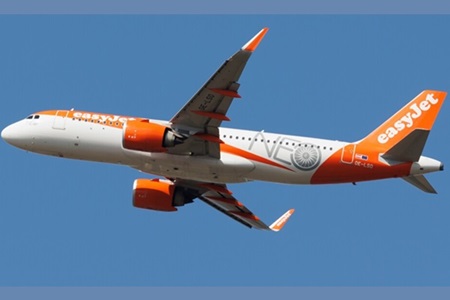
EasyJet has taken a pioneering step as the first airline partner of the Iris programme, an initiative led by the European Space Agency (ESA) and global communications company Viasat. The programme utilises state-of-the-art satellite technology to revolutionise air traffic management (ATM).
The EASA-certified Iris service provider, ESSP, has garnered support from 15 leading Air Navigation Service Providers (ANSPs) to facilitate the first commercial flights across Europe this year, with up to 11 easyJet Airbus A320neo aircraft participating. This initiative marks a significant milestone as the first European implementation of the Single European Skies initiative.
By leveraging Iris, easyJet aims to operate its aircraft with maximum efficiency, resulting in further improvements in fuel burn and emissions reductions. The programme is expected to play a pivotal role in driving airspace modernisation throughout the aviation industry.
Airspace modernization is a critical component in the airline industry’s pursuit of net-zero emissions. In 2022, easyJet announced an interim science-based carbon reduction target, aiming for a 35% carbon emissions intensity improvement by FY2035, based on a FY2020 baseline. This commitment aligns with easyJet’s overarching goal of achieving net-zero carbon emissions by 2050.
Efficient airspace utilization is crucial for reducing emissions in aviation, presenting the most viable avenue for immediate carbon reductions. Direct flight paths lead to shorter flying times, resulting in lower fuel burn and reduced emissions. Achieving this efficiency is integral to fulfilling the Single European Sky’s ATM Research (SESAR) ambition, targeting a 10% reduction in carbon emissions from European aviation.
Iris signifies a technological breakthrough, enhancing satellite communications between aircraft and ground control. This innovation supports air traffic controllers and pilots in achieving operational efficiencies by calculating optimal routes, cruising altitudes, and employing continuous climb and descent paths.
The European Space Agency (ESA) has spearheaded and funded Iris, aligning with the European Policy on Single European Skies. The solution provides comprehensive European coverage and relies on cutting-edge, secure satellite communication mobile technologies. ESA coordinated closely with European aviation stakeholders, including the International Civil Aviation Organisation (ICAO), ensuring Iris compliance with European and global aviation standards. To achieve this, ESA formed a European industrial consortium comprising more than twenty companies, with Viasat (recently acquiring Inmarsat) as the prime contractor.
Iris, powered by Viasat’s award-winning SwiftBroadband-Safety (SB-S) connectivity platform, sets the stage for multilink data link communications, a cornerstone for implementing new ATM functionalities.
Airbus offers Iris as a fully developed and certified capability on the A320 and A330 series aircraft. Iris shares trajectory and intent-based operational information, enabling airlines to avoid holding patterns, calculate optimal routes and altitudes, and benefit from continuous climb and descent pathways.
Hugh McConnellogue, Director of Operations & Navigation at easyJet said: “More efficient use of airspace is a critical way we can tackle the industry’s emissions right now. Adopting Iris technology on these aircraft will enable easyJet to fly more directly and efficiently, thereby reducing carbon emissions as well as enhancing our on time performance – which in turn improves our customers’ experiences.
“We’re thrilled to be paving the way in this area whilst working towards our goal to achieve our net-zero ambitions by 2050, as outlined in our roadmap.”
Charlotte Neyret, Chief Executive Officer, ESSP, added: “These first commercial flights are bringing to reality a decade of both vision and investment in this new datalink communication solution to achieve safer and greener aviation. ESSP is delighted to operate this moment of synchronisation between all stakeholders, from industry to airlines, with the proactive contribution of numerous Air Navigation Service Providers. Thanks to all partners, ESSP is proud to provide Iris Satcom datalink service to Europe, as well as to initiate the Iris flights with a key airline such as easyJet. Iris technology allows the development of new environmentally friendly routes, which will improve ATC management, reduce fuel costs and lead to the deployment of more efficient air operations.”
Javier Benedicto, acting Director of Connectivity and Secure Communications, ESA, stated: “These first Iris commercial flights put Europe firmly at the forefront of the digitalisation and modernisation of Air Traffic Management. Iris enables tangible benefits to the commercial aviation community and society at large, including reduced emissions of carbon dioxide and fewer delays for passengers through more efficient flight paths.
“As a follow-up of Iris, Iris Global, which was launched in 2022, aims to extend the benefit of Iris beyond Europe. This will be achieved through geographical expansion, including Asia, the USA, the Middle East and Australia, and service expansions by adding new ICAO aviation standards as well as new satellite-based communication solutions for supporting future air traffic management of Remotely Piloted Aircraft Systems. We are very proud to share this historic milestone for commercial aviation with the ESA Member States that have funded Iris activities and that will continue to support it in the future.”
Joel Klooster, SVP Flight Safety and Advanced Air Mobility (AAM), Viasat, commented: “We are thrilled to see Iris flying with a leading airline such as easyJet, a crucial step on our pathway to reducing emissions and easing congestion in European skies. We want to thank all the partners who played a part in achieving this long-term goal, and we look forward to seeing the results of these first commercial flights. Even more than that, we look ahead to the industry reaping the rewards of this innovation well into the future – and to passengers and airlines alike benefitting immensely.”












Add Comment